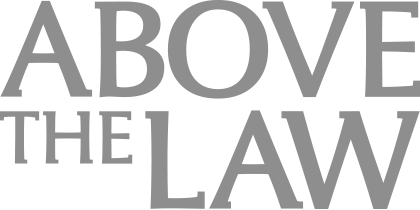Bagging A Trademark Bully
Here's an example of an alleged "trademark bully," one of the world's most famous fashion brands.
 The adversarial nature of IP legal practice can’t be denied. The possibility of conflict always exists for both IP holders and those susceptible to being accused of IP infringement. It is no surprise, therefore, that certain pejorative terms have arisen in the IP space, and are sometimes used to denounce the party sitting on the other side of the courtroom or negotiating table. Some of those terms, such as “patent troll,” have even made their way into the broader culture, via their use in the popular media. Of course, for every troll asserting a patent there is a “copycat” or “rip-off artist” on the other side of the case — with reasonable people differing on which side is more worthy of the negative characterization.
The adversarial nature of IP legal practice can’t be denied. The possibility of conflict always exists for both IP holders and those susceptible to being accused of IP infringement. It is no surprise, therefore, that certain pejorative terms have arisen in the IP space, and are sometimes used to denounce the party sitting on the other side of the courtroom or negotiating table. Some of those terms, such as “patent troll,” have even made their way into the broader culture, via their use in the popular media. Of course, for every troll asserting a patent there is a “copycat” or “rip-off artist” on the other side of the case — with reasonable people differing on which side is more worthy of the negative characterization.
In the trademark world as well, there is no shortage of unflattering terms used to describe infringers. When it comes to trademark holders themselves, however, perhaps the most negative characterization in circulation is the term “trademark bully.” Loosely defined, trademark bullies are usually considered larger, well-known companies that take a hyper-aggressive approach to asserting their trademark rights, sometimes to the point of absurdity. Whether or not you consider the use of terms like trademark bully productive, there is no doubt that there are companies that find themselves vilified for their approach to trademark enforcement. Considering as well that many companies marked as trademark bullies are often world-famous brands, it is not a surprise that their efforts often receive media scrutiny as well. There are numerous famous examples of trademark bullying that have received such attention in recent years.
Understanding the trademark bully phenomenon, however, requires an appreciation of the differences between patent and trademark law. With patents, the patent owner has the right to exclude others from unauthorized use of their invention. At the same time, patent owners have no obligation to exercise that right. Nor does the perceived or actual value of the patent itself necessarily suffer if the patent owner chooses to forgo enforcement. Not so with trademarks. Trademark owners, in order to avoid dilution of their trademark rights, must police the use of their trademarks in the marketplace. Looking the other way, in other words, is not a viable strategy for a trademark owner in most instances. Given the trademark owner’s duty to police, it is easier to understand why trademark owners can sometimes decide that aggression — in all cases of actual or possible infringement, regardless of context — is the best approach to both stop current, and deter future, trademark infringement.

Legal Contract Review in Under 10 Minutes? Here’s How
In practice, most trademark infringement is of a small-time nature, and a strongly worded cease and desist letter is enough to generate a favorable resolution for the trademark owner. Every so often, however, the media chooses to make an example of an overly zealous trademark owner by highlighting a cease-and-desist letter sent to a sympathetic “infringer,” or a letter that contains claims with incorrect or weak legal grounding.
As an example, consider what happened to Louis Vuitton, one of the world’s most famous and valuable brands, when it decided to attack a student group at U. Penn law school for alleged improper use of the famous Louis Vuitton logo. While a humorous incident, and one where Louis Vuitton was perhaps properly excoriated, it does bear mentioning that Louis Vuitton is one of the most-counterfeited brands in the world, and surely suffers economic harm from both the counterfeiting and significant legal expenses it incurs policing that activity.
Whether or not you consider Louis Vuitton a trademark bully, or just a company trying to protect its rights in a difficult operating environment for luxury brands, there is no doubt that just carrying the label of a trademark bully can have negative consequences for a company. For example, Louis Vuitton’s reputation as an overzealous trademark enforcer is apparently working against it in an ongoing dispute with a much smaller bag maker called My Other Bag. Unlike Louis Vuitton bags, which sell for thousands, the My Other Bag products are “playful parodies” in the words of their founder, and are much cheaper ($35-55) canvas totes that say “My Other Bag…” on one side with a cartoon drawing of a famous designer bag (e.g., a Louis Vuitton) on the other. Despite the tongue-in-cheek nature of the My Other Bag products, Louis Vuitton elected to sue them a few years back.
To say the case has not gone well for Louis Vuitton would be an understatement. First, the company lost on summary judgment, with the District Court judge finding that the accused products were clearly protected as parodies. Going further, the judge also found that the use of the Louis Vuitton trademark by My Other Bag actually served to enhance, rather than dilute, the value of Louis Vuitton’s marks — especially because the parody made clear that owning a real Louis Vuitton was a sign of accomplishment, even if only in an aspirational sense. The Second Circuit affirmed the District Court in full, and the case is effectively over but for an ongoing attorney’s fees motion seeking hundreds of thousands of dollars from Louis Vuitton for filing such a weak case.
Sponsored

Curbing Client And Talent Loss With Productivity Tech

Data Privacy And Security With Gen AI Models

How Thomson Reuters Supercharged CoCounsel With Gen AI Advances


Tackling Deposition Anxiety: How AI Is Changing The Way Lawyers Do Depositions
Whether or not Louis Vuitton eventually has to pay attorney’s fees to the other side, it is clear that the company’s reputation has worked against it in the My Other Bag case. For one, My Other Bag was emboldened to fight back precisely because Louis Vuitton was known as a trademark bully. Furthermore, My Other Bag received free legal help from lawyers looking to claim a trademark bully scalp. And while it is impossible to know how Louis Vuitton’s reputation affected the District Court’s decision on the merits, it is likely that its status as a prodigious and aggressive enforcer of its trademark rights supports a finding that it should have known better than to push forward with a legally defective claim.
Ultimately, the lesson is not to assume that Louis Vuitton, or any other company branded a trademark bully, is worthy of the denigration thrown its way. In fact, it is easy to sympathize with Louis Vuitton’s efforts to protect its brand while facing rampant counterfeiting of its products on an international scale. Rather, the key lesson for lawyers and their clients is to appreciate that the other side in any IP case will not hesitate to use pejorative terms like trademark bully in the hopes of gaining a tactical advantage. Articulating a forceful and accurate response is therefore a priority for both client and counsel. At minimum, avoiding behaviors that suggest the name-calling is warranted is essential. Because even the most prestigious brands can’t avoid being dragged in the reputational gutter on occasion, and being labeled a bully actually increasing a brand owner’s risk of being bullied.
Please feel free to send comments or questions to me at [email protected] or via Twitter: @gkroub. Any topic suggestions or thoughts are most welcome.
Earlier:
- A Top Law School Tells a High-End Fashion House Where to Stick Its Cease and Desist Letter
- Louis Vuitton’s Inability To Take A Joke Opens Up A Chance To Fix Our Broken Trademark Laws
Sponsored

Tackling Deposition Anxiety: How AI Is Changing The Way Lawyers Do Depositions

Legal Contract Review in Under 10 Minutes? Here’s How
Gaston Kroub lives in Brooklyn and is a founding partner of Kroub, Silbersher & Kolmykov PLLC, an intellectual property litigation boutique. The firm’s practice focuses on intellectual property litigation and related counseling, with a strong focus on patent matters. You can reach him at [email protected] or follow him on Twitter: @gkroub.







